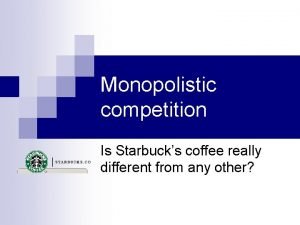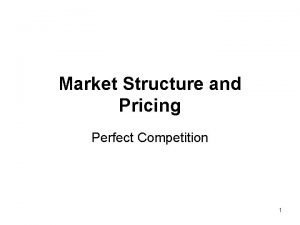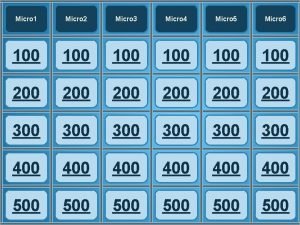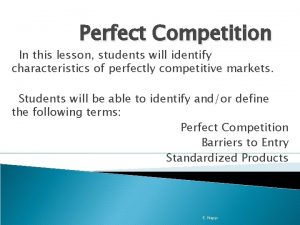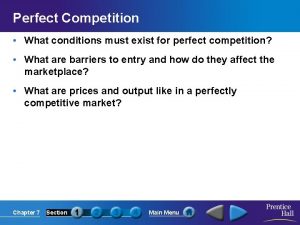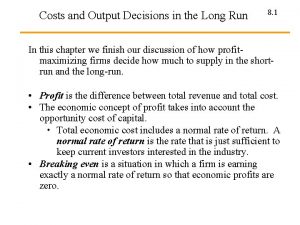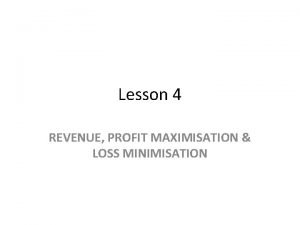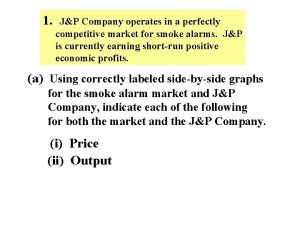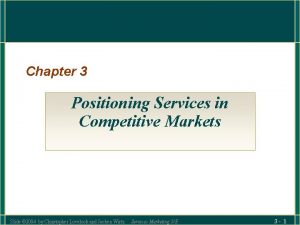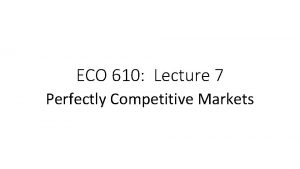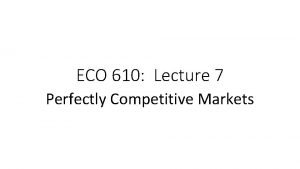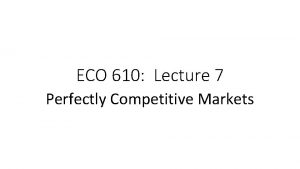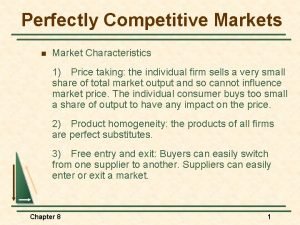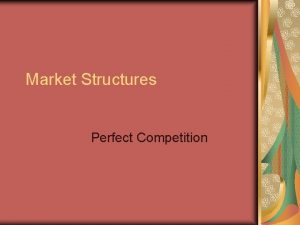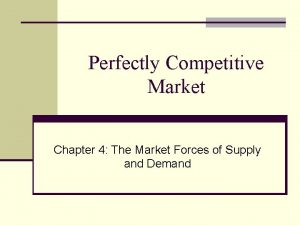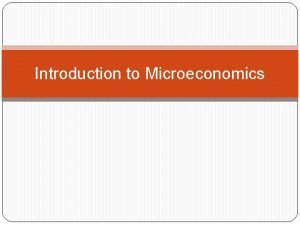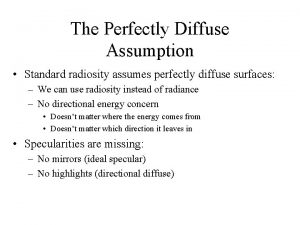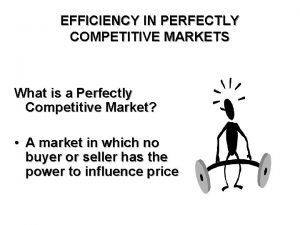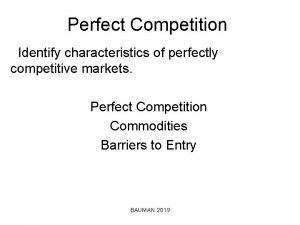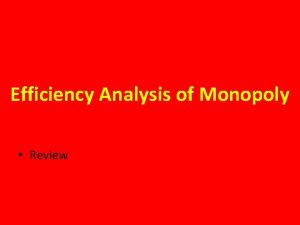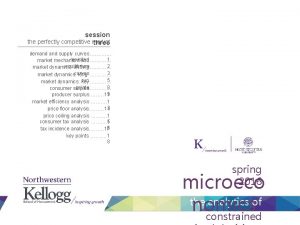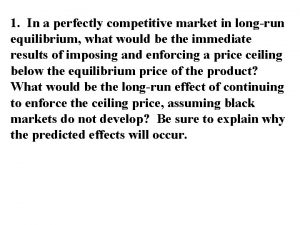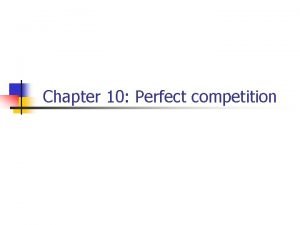Microeconomics Perfectly Competitive Markets Markets A market is






















- Slides: 22

Microeconomics Perfectly Competitive Markets

Markets A market is comprised of all of the buyers and sellers of a particular good or service. A market is perfectly competitive if the good or service being bought and sold is: 1. Highly standardized (pretty much the same everywhere you go) 2. The number of buyers and sellers is large 3. All of the participants are well informed about the market price

Demand The quantity demanded of any good is the amount of that good that buyers are willing and able to purchase. It largely depends on price. Law of Demand: there is a negative relationship between a good’s price and the quantity demanded. It is the result of cost-benefit analysis. Price Quantity Demanded (QD)

Demand Continued Demand Schedule: a table showing the relationship between the price of a good or service and the quantity demanded. Demand Curve: a graph showing the relationship between the price of a good or service and the quantity demanded. Ø It is a downward sloping line with the quantity demanded on the horizontal axis and the price on the vertical axis.

Demand Curve Demand for Watermelons 6 5 . B 4 Price Movement along the curve 3 . A 2 1 0 1 2 3 4 5 6 7 Quantity Demanded 8 9 10

Adding Demand Curves Always add demand curves horizontally to obtain the market demand. Pg. 12 D

Shifts in the Demand Curve Increase = Demand curve shifts to the RIGHT

Shifts in the Demand Curve Decrease = Demand curve shifts to the LEFT

Income Normal Goods: Inferior Goods: Demand is positively related to income Demand is negatively related to income

Examples of Normal and Inferior Goods: Normal Goods: When you have more money, you want more of this type of good. Ex: steak Inferior Goods: When you have more money, you want less of this type of good. Ex: ramen vs.

Prices of Related Goods Substitutes: when a lower price for one good causes demand for another good to decrease. Complements: when a lower price for one good causes demand for another good to increase.

Tastes Demand goes UP Demand goes DOWN

Expectations Expect to get fired? You will probably save money in anticipation of this future change. In this scenario, demand would go down because you don’t want to buy anything.

Number of Buyers Number Duh. of buyers goes then demand goes

Supply The quantity supplied of any good is the amount of that good that sellers are willing and able to produce. It largely depends on price. Law of Supply: there is a positive relationship between a good’s price and the quantity supplied. It is the result of cost-benefit analysis. Price Quantity Supplied(QS)

Supply Curve Upward sloping, and again we add supply curves horizontally (Pg. 15).

Shifts in the Supply Curve Increase = Supply curve shifts to the RIGHT

Shifts in the Supply Curve Decrease = Supply curve shifts to the LEFT

Input Prices Inputs are any of the things that suppliers have to purchase to supply a product. Examples: cost of resources, labor costs, real estate costs, cost of utilities, etc. If input costs then it will quantity supplied, so a shift to the left If input costs then it will quantity supplied, so a shift to the right

Technology Better technology = an increase in supply

Expectations If suppliers expect prices to in the future, they quantity supplied today, so the supply curve shifts to the left.

Number of Sellers More sellers = increase in quantity supplied, and vice versa
 Monopolistic competition starbucks
Monopolistic competition starbucks Perfectly competitive market example
Perfectly competitive market example A farmer produces peppers in a perfectly competitive market
A farmer produces peppers in a perfectly competitive market Is milk a perfectly competitive market
Is milk a perfectly competitive market Perfect competion examples
Perfect competion examples The two least common competitive structures are
The two least common competitive structures are For an industry to be perfectly competitive what must exist
For an industry to be perfectly competitive what must exist A firm's long-run average cost curve
A firm's long-run average cost curve Short run graph
Short run graph Firms in competitive market
Firms in competitive market Profit maximization
Profit maximization J p company operates in a perfectly competitive
J p company operates in a perfectly competitive Short run supply curve for a perfectly competitive firm
Short run supply curve for a perfectly competitive firm Teaching market structures with a competitive gum market
Teaching market structures with a competitive gum market Slow-cycle market companies examples
Slow-cycle market companies examples Therapeutic index
Therapeutic index Positioning services in competitive markets
Positioning services in competitive markets Firms in competitive markets chapter 14 ppt
Firms in competitive markets chapter 14 ppt Positioning services in competitive markets
Positioning services in competitive markets Product market boundaries and structures
Product market boundaries and structures Positioning services in competitive markets
Positioning services in competitive markets Hypothetical market structure
Hypothetical market structure Market segmentation target and positioning
Market segmentation target and positioning
